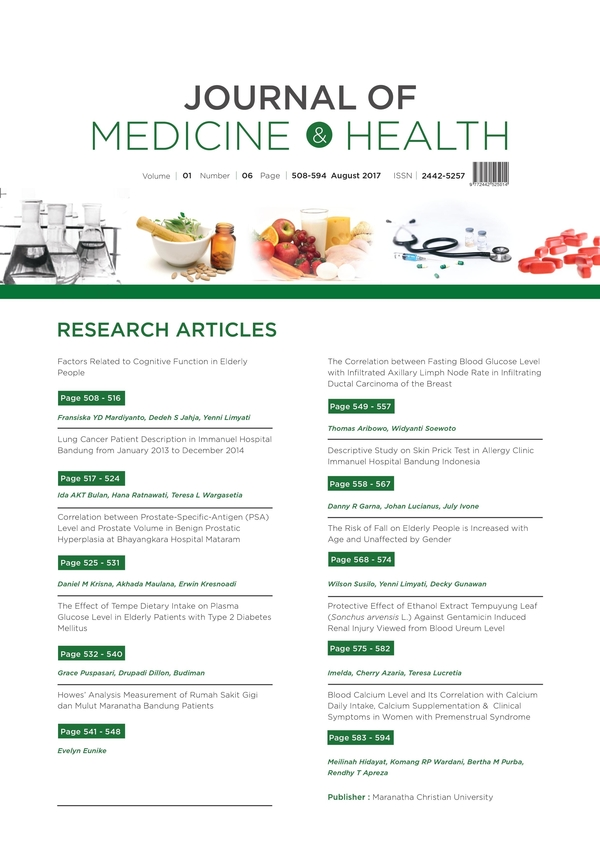The Risk of Falling in Elderly Increased with Age Growth and Unaffected by Gender
DOI:
https://doi.org/10.28932/jmh.v1i6.554Abstrak
Elderly people are a group of people with age of 60 and above. Studies in United States showed one-third of elderly people experienced fall in their houses and one-forty of them need bedrest in hospital. Falling can cause physical and mental injury. Physical injury manifests as fracture, hematoma, bruises, and dislocation, and mental injury manifests as lack of self esteem. This study aimed to examine the relation between age and gender on risk of fall on elderly people. This is a cross-sectional analytical study involving 23 elderly people from Tulus Kasih Elderly Home that met the inclusion criteria. Risk of fall were checked with Timed Up and Go Test. The data acquired were analyzed with chi-square with α = 0,05. As results, age significantly affected risk of fall (p=0.019) but gender did not (p=0.265). We concluded the risk of falling is increased with age and unaffected by gender.Keywords : age, gender, risk of fall, timed up and go testUnduhan
Data unduhan belum tersedia.
##submission.downloads##
Diterbitkan
2017-08-31
Cara Mengutip
1.
Susilo W, Limyati Y, Gunawan D. The Risk of Falling in Elderly Increased with Age Growth and Unaffected by Gender. J. Med. Health [Internet]. 31 Agustus 2017 [dikutip 2 Januari 2026];1(6). Tersedia pada: http://114.7.153.31/index.php/jmh/article/view/554
Terbitan
Bagian
Articles
Lisensi
Authors who publish with this journal agree to the following terms:
- Authors retain the copyright and grant the journal right of first publication with the work
simultaneously licensed under a Creative Commons Attribution-NonCommercial 4.0 International License that allows others to share the work with an acknowledgement of the work's authorship and initial publication in this journal. - Authors are able to enter into separate, additional contractual arrangements for the nonexclusive distribution of the journal's published version of the work (e.g., post it to an institutional repository or publish it in a book), with an acknowledgement of its initial publication in this journal.
 This work is licensed under a Creative Commons Attribution-NonCommercial 4.0 International License.
This work is licensed under a Creative Commons Attribution-NonCommercial 4.0 International License.

















